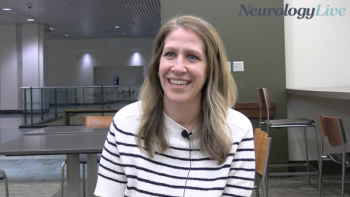
Lack of Sex Differences and High Frequency of Neurological Abnormalities Identified in REM Sleep Behavior Disorder
In a recent multisite analysis of 361 patients with REM sleep behavior disorder, 84% had neurological abnormalities in at least one domain observed.
Recently published in ANNALS of Clinical and Transnational Neurology, findings from a multisite analysis demonstrated a lack of sex differences and a high frequency of concomitant neurological abnormalities among patients with REM sleep behavior disorder (RBD). Overall, the results provided valuable information on sex differences, antidepressant use, heritability, and the breadth and severity of neurological impairment for future longitudinal studies and clinical trials on prodromal syncleinopathies.1
Among 361 patients included, outcomes were reported based on sex (men, n = 295’ women, n = 66), history of antidepressant use (with us, n = 200; without, n = 154; with correction for sex differences) and extent of synucleinopathy burden (defined as isolated RBD, n = 56; defined as RBD+, n = 305 [i.e., exhibiting at least 1 abnormality]). In these participants, 36% commonly demonstrated abnormalities in global cognition (Montreal Cognitive Assessment [MoCA]), 48% in motor function (alternate tap test), 57% sensory (brief smell identification test), 38.8% in autonomic function (orthostatic hypotension), 39.3% in anxiety and 31% in depression (Beck Anxiety Inventory and Patient Health Questionnaire-9, respectively).
“The study reported baseline neurological characteristics of a large registry of patients from the North American Prodromal Synucleinopathy (NAPS) Consortium with RBD. RBD is widely regarded as being a prodromal synucleinopathy which is one of the earliest and best predictors that exists for Parkinson disease, Lewy body dementia, and related disorders. In clinical practice, RBD is thought to be isolated from other early neurological symptoms preceding parkinsonism and/or dementia. However, this study found that RBD was associated with a surprisingly high rate of subtle neurologic abnormalities (84%) -- despite none of these patients yet receiving a clinical diagnosis for a neurodegenerative condition," colead authors Jonathan E. Elliott, PhD, assistant professor of neurology, and Miranda M. Lim, MD, PhD, associate professor of neurology, Oregon Health & Science University School of Medicine, told NeurologyLive®.
READ MORE:
Investigators recruited adults with overnight polysomnogram-confirmed RBD without Parkinson disease, dementia, multiple system atrophy, or narcolepsy from 9 sites across North America between August 2018 and April 2021. Data collection across sites included structured interviews and questionnaires on health history, structured neurological, and physical examinations, and an objective test battery of cognitive, motor, autonomic, and sensory functions. Following the data collection, a neurologist at each site then completed a standardized, structured assessment to perform a clinical diagnosis.
Approximately 54.8% of the total population reported a history of obstructive sleep apnea and 8.0% had central sleep apnea. In the same population, investigators observed a high frequency of insomnia (27.4%), restless legs syndrome (18.0%), and periodic limb movement disorder (15.5%). Comparing sex differences with these sleep disorders, women had higher rates of insomnia (37.9% vs. 25.1%, P = 0.038), and lower rates of obstructive sleep apnea (37.9% vs. 58.6%; p = 0.01) after adjusting for antidepressant usage. Although women had a higher proportion reported for a history of antidepressant usage (74.2% vs. 51.2%; P <.001), they less frequently associated RBD behavior with medication use (24.7% vs. 10.6%; P = .027).
"NAPS participants demonstrated high rates of neurologic impairment concomitant with RBD. As NAPS is a longitudinal study design, individuals are undergoing comprehensive neurological assessments in combination with novel brain imaging and blood/cerebrospinal fluid biomarkers," Elliott and Lim told.
All told, the limitations included the cross‐sectional and descriptive nature inherent to these data and experimental design. The participants were recruited primarily from clinics which introduced possible selection bias and may have contributed to the relatively demographically homogenous sample. Information of the individuals who were not enrolled were not gathered which limited the understanding of how the cohort might compare with a community‐based sample. Also, despite rigorous standardization with the data collection across the sites, intersite variability may have existed. In addition, antidepressant use history may be subject to bias since it was self-reported by the participant. The authors lastly noted that the inclusion of p‐values in the results was not corrected for multiple comparisons, and that issues on selection and confounded were not robustly shown.
"NAPS is an on-going collaborative (multinational/multisite) research effort – see
REFERENCES
1. Elliott JE, Lim MM, Keil AT, et al. Baseline characteristics of the North American prodromal Synucleinopathy cohort. Ann Clin Transl Neurol. 2023;10(4):520-535. doi:10.1002/acn3.51738
Newsletter
Keep your finger on the pulse of neurology—subscribe to NeurologyLive for expert interviews, new data, and breakthrough treatment updates.



































